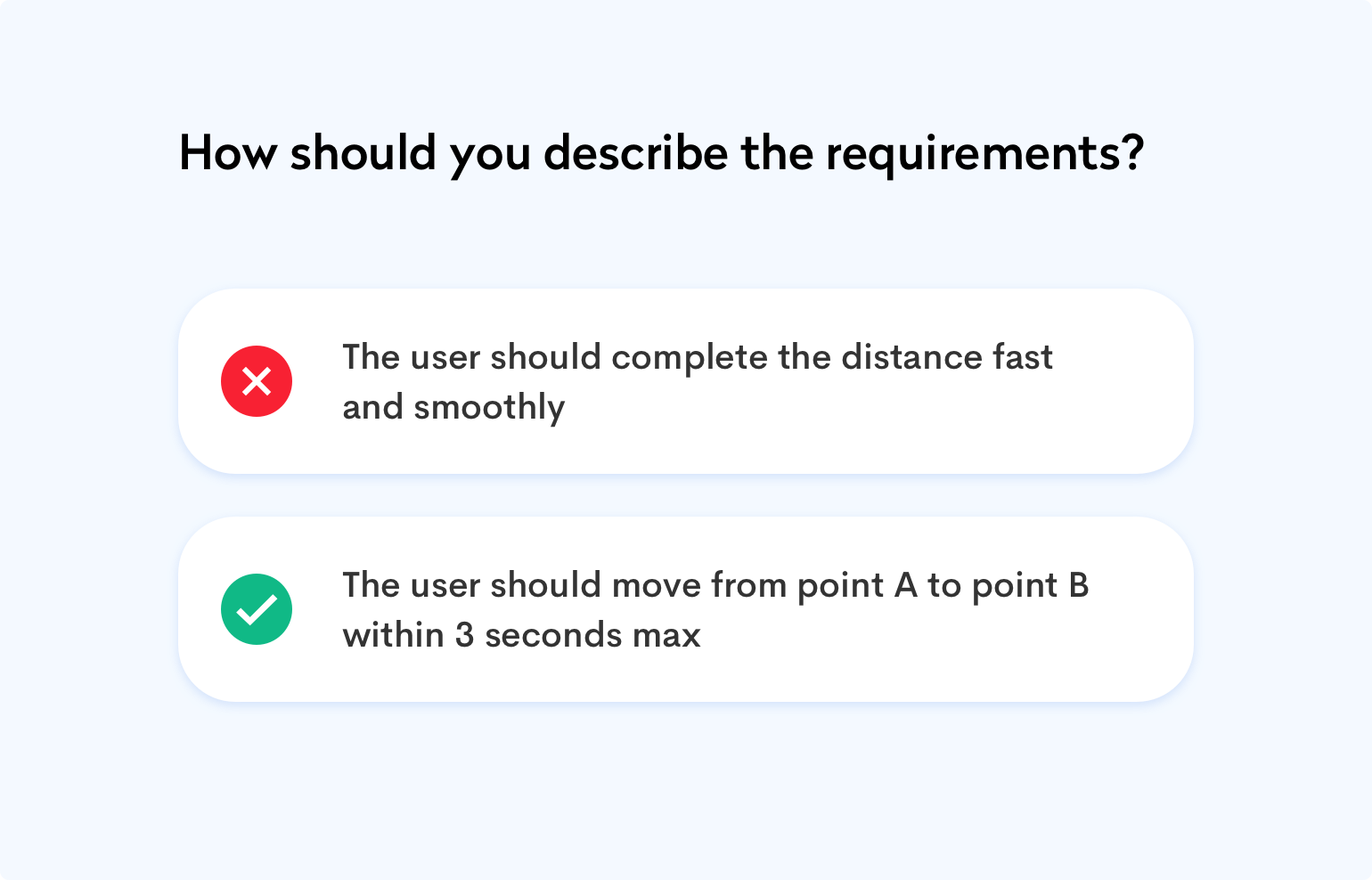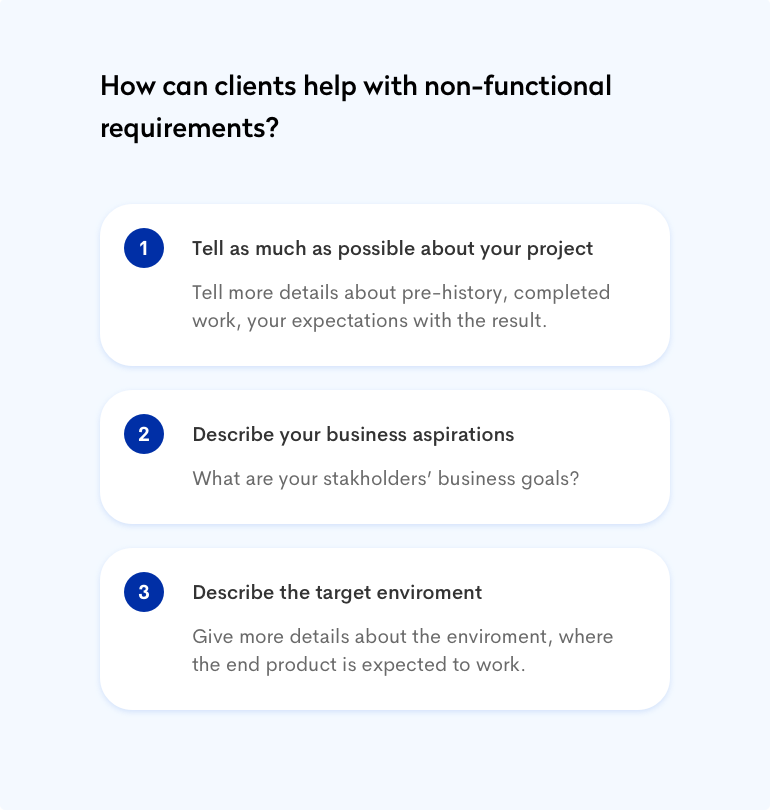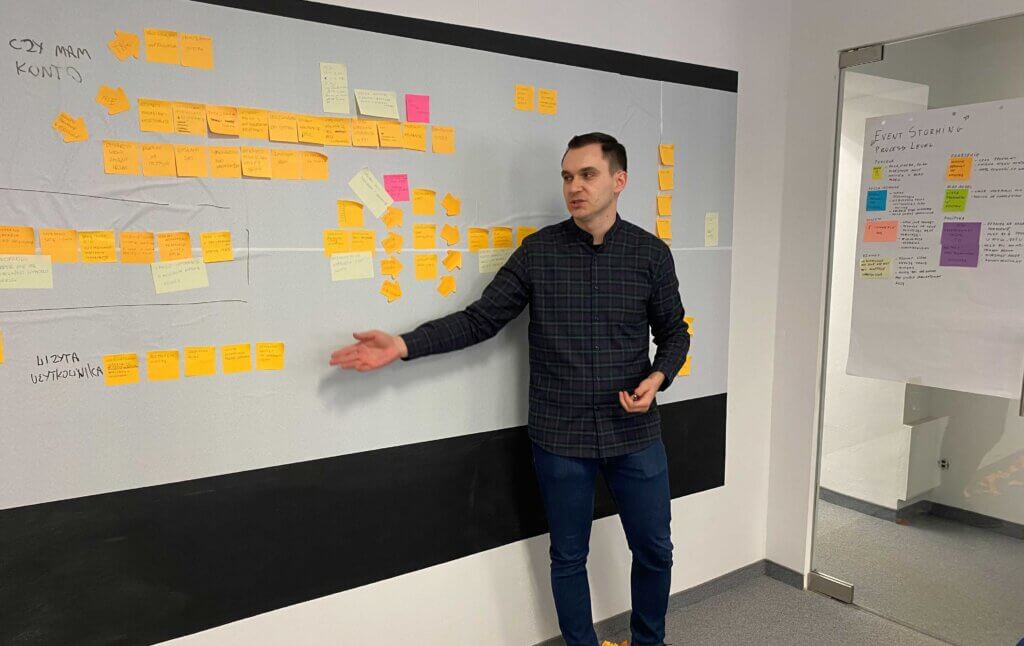Non-Functional Requirements: Definition and Tips for Better Requirements Gathering
Well-defined functional and non-functional requirements are a key step when you plan to create a successful application. Identifying your needs and converting them into clear requirements help development teams better understand your goals, product idea, and expectations. They are the team’s first step to getting well-prepared for the IT project.
Let’s look at some statistics. Research shows that over 30% of IT projects fail because of poorly formulated requirements. Creating unclear requirements can increase the project timeline and budget by up to 60%, so it’s worth learning how to do it right and increase your chances of success.
First, you must understand what “non-functional requirements” means and how you should describe them correctly in the project specification. Keep reading!
Table of Contents
What Are Non-Functional Requirements? A Definition and Examples
Formulating functional and non-functional app requirements is essential if you plan to create a new IT product in cooperation with a software house. Specifying expectations affects the effectiveness of the web development process. In particular, it allows developers to better understand your product goals and vision and get well-prepared for the procedure.
What do “non-functional requirements” mean? To put it simply, non-functional requirements (called Quality Attributes) describe the system’s performance and operational capabilities. In other words, they define how the system should work and any functionality limits it should have. The requirements are determined mainly by the application type, target group, budget, your needs, and the project’s goals.
When you plan to build your application, don’t forget about identifying the functional requirements, too—these are equally important when gathering your needs. Functional requirements focus on functionalities only, and defining them means describing each functionality step by step.
Let’s go back to the non-functional requirements for a moment. What are the different types? The scale of choice is extensive, so we’re presenting just a few examples to give you a good idea:
- Securability
- Scalability
- Usability
- Availability
- Accessibility
- Capacity
Don’t forget about covering some vital information in your specification, like the browser types you want to adapt the system to or the implementation method. Read on to get the detail— we will discuss each area separately in the next part of this article.
How Non-Functional Requirements Impact the Software Development Process
As mentioned above, precise requirements are essential in building your application and affect the entire development process. Gathering all the requirements is vital from a business point of view and the software house’s perspective. It will help you start a more predictable project, spot possible mistakes, and choose web app architecture wisely. Additionally, determining an app security strategy at the very beginning will undoubtedly save your time and money.
Making such a decision in the later stages of the project can be harmful. In some situations, it can be very costly to ensure the safety of the application after you’ve started building it. Deciding on the solution much earlier will minimize the risk of additional costs.
How to Create a Complex Requirements List for Your Project
Don’t get discouraged if you find it challenging to gather requirements independently. There is an easy way to identify all desirable features and user scenarios and prioritize the most important ones. Attend product workshops that will help you establish functional and non-functional requirements for your project and save money on development. Although we mainly focus on functional requirements in the workshop, it is the first step to discuss non-functional ones. Learn more about how we conduct the workshops in the article below.
Non-Functional Requirements: Real-Life Examples
Below, we’ve listed the areas with specific examples of non-functional requirements that should be described in the IT project specification. The choice of requirements depends on your context and desirable outcomes, so adjust them to suit your situation.
Let’s have a look at some examples.
Availability / Reliability
Ask yourself a question: When can users use your application? When describing non-functional requirements in terms of accessibility, you should specify whether the application needs to function 24/7/365 or be available for a certain number of years.
Performance
Performance is crucial to building an efficient application that adequately handles user traffic. Accordingly, it is necessary to specify:
- The maximum number of users simultaneously using the application
- Potential users’ location
- How fast the system operates (the full response time to users’ actions)
- How the application uses hardware resources
Supportability
Specify the type of support that your product requires in the event of bugs. For example, it could be provided in-house or externally. Indicate:
- The way users can report bugs.
- How do you monitor the application?
- The maximum time needed to fix errors (broken down into relevant error types)
- The best way to test the application
Securability
Ensuring application security is one of the crucial elements in product development. Set security standards to protect your data and avoid possible external attacks. For example:
- Identify all potential threats in your industry.
- Choose the desired methods in terms of application security.
- Determine whether additional security practices are required (for example, those related to data storage—GDPR)
- Adjust the security strategy to the situation and take special care in protecting sensitive data, such as personal information or financial data
Implementation
This area covers all issues regarding how to implement the application. You should indicate, for example:
- When the application is implemented
- The target group type and size and how many users will use your app at different stages of development.
- The types of integration necessary for the implementation
- Guidelines regarding the desired application architecture or specifically required programming languages or frameworks
How to Properly Describe Non-functional Requirements in the Technical Specification
Knowing precisely what product properties and non-functional requirements are, you now need to write everything down in the technical documentation. As we mentioned at the beginning of the article, correctly describing the conditions affects the project’s success. If you are wondering what the entire technical specification should look like, check out this article where we comprehensively characterize the content of this document.
Some key considerations for non-functional requirements:
They should be measurable and testable.
It’s not enough to say that the software should be “user-friendly” or “convenient”; instead, you need to identify various metrics or numbers that would determine the effectiveness of your product. The more accurately standards are set (such as exact page response times), the better your chance of overcoming obstacles during the project’s development and implementation.

Standards need to be set for system components, not for entire products.
Consider which critical interfaces and systems require such requirements to make the requirements clear and specific from the beginning. It is crucial to determine the interface functions with which users most frequently interact and configure performance requirements as early as possible.
Non-functional requirements must interact with business goals.
The business objectives must be analyzed between the stakeholders and the project architect. It includes many aspects, such as analyzing the current market situation or the competition. To measure user activities on the site, such as analysis of user operating systems, browsers, networks, and hardware requirements, it is worth using analytical tools such as Google Analytics. It is essential because, for example, a few minutes’ difference in system availability may not drastically impact sales results. Still, sometimes it can mean extra weeks of development work.
Take into account the limitations of the system architecture
If you are dealing with an older system, the entire architecture may need to be changed to improve performance. It may include APIs that are slower to restore data, for example. The same is true for older code, which may require refactoring and a complete overhaul if it meets specific requirements.
Check already existing standards
It turns out that many recommendations for system quality have already been made before. Therefore, it’s a good idea to check the already established guidelines for iOS or Android apps, for example, to suggest some requirements for your app.

What else is worth paying attention to when describing non-functional requirements?
The form doesn’t need a specific scheme—a detailed description in bullet points is sufficient. Below, you can find some examples:
- The application must handle 2,000 users at the same time
- The application works on web browsers such as Internet Explorer
- The application will respond to the user’s request within three seconds
Preparing non-functional requirements doesn’t have to be complicated. Writing them down should come quickly if you have a clear product idea. However, if you are unsure about the application’s functionality and want to analyze how it works, attend Event Storming workshops to understand how your system operates entirely.
Contact us and receive a free consultation. We will advise you and propose the best solutions for your business!





